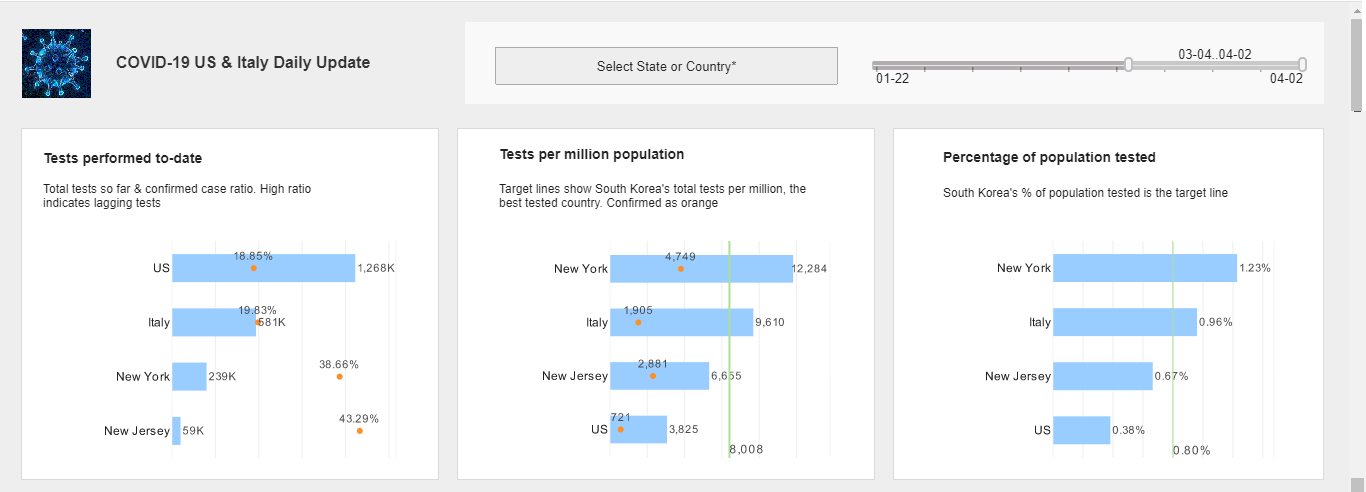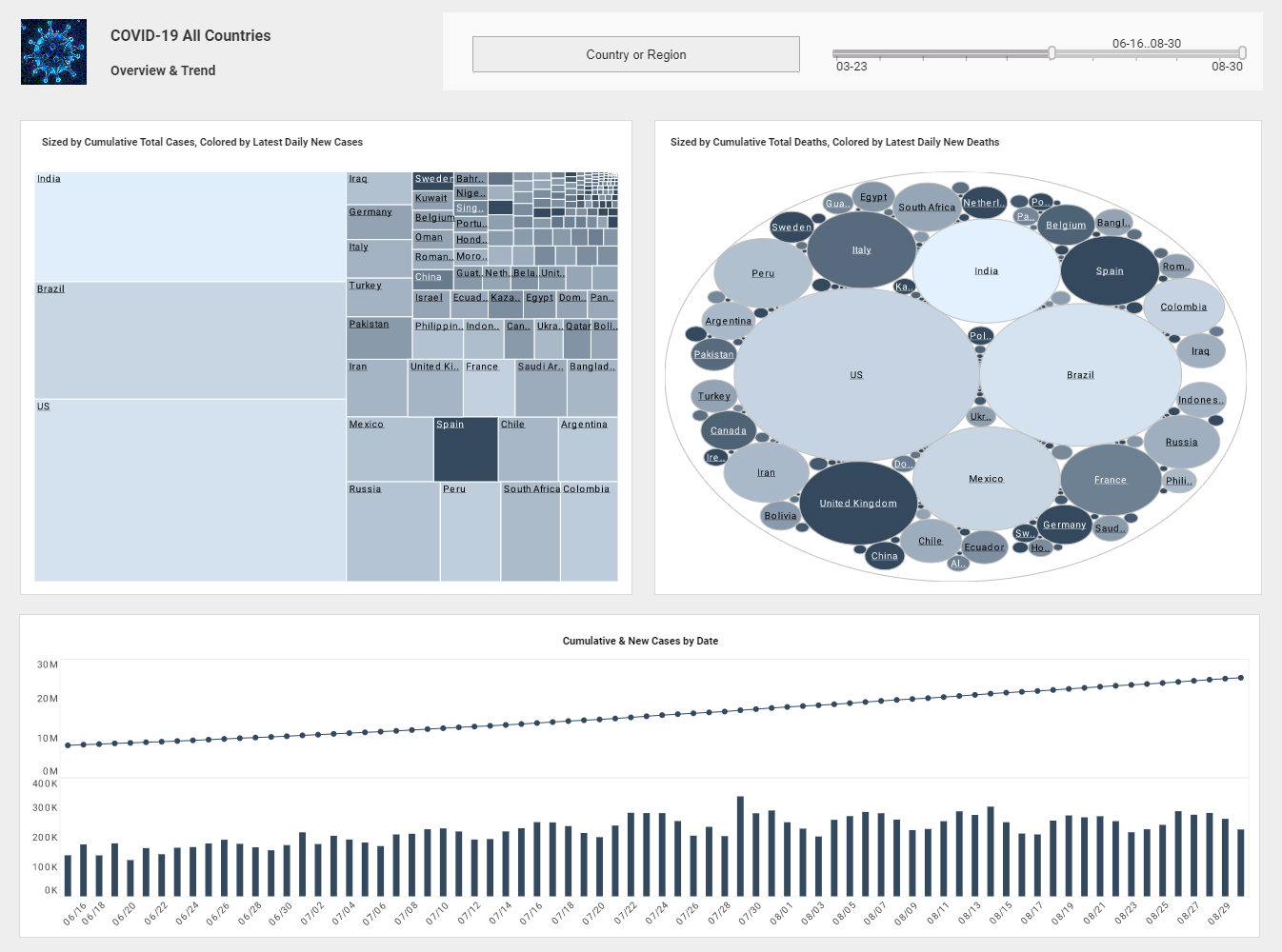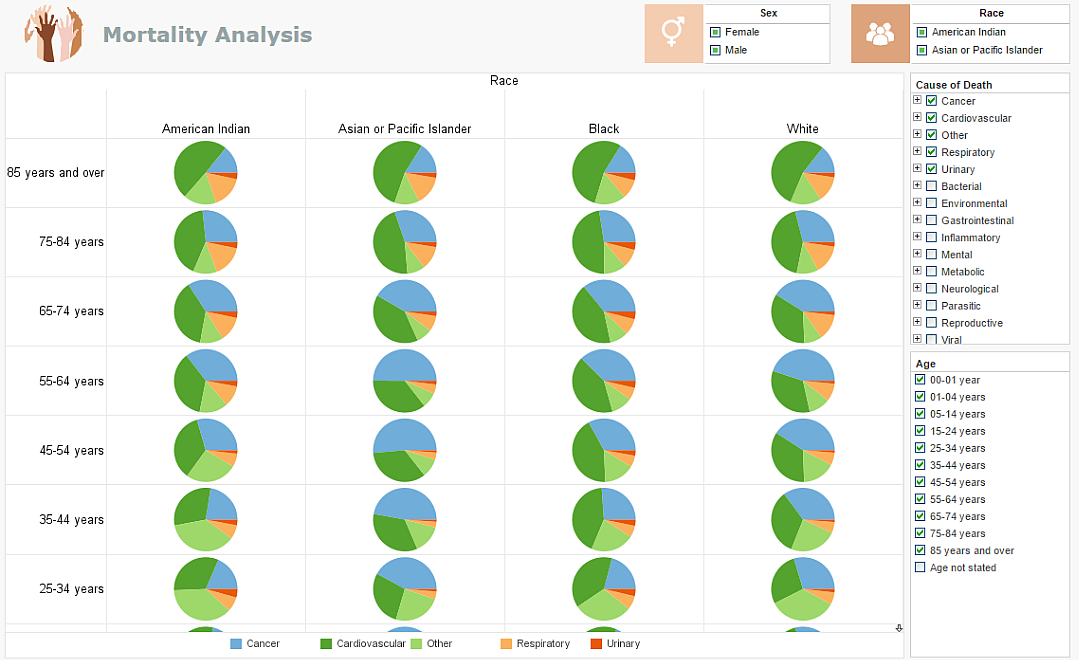Healthcare Reporting Software
The management of hospitals, clinics, and independent healthcare providers all involve tracking factors such as patient complaints, nurse and employee turnover rates, and more. When using basic office programs like Excel or SQL database software, processes of analysis are often cumbersome and prone to human error.
The answer for healthcare organizations is adapting a reporting software that can meet all informational needs through dashboards and reports, without having to rely on a professional analyst or spending copious amount of money on IT setup.
InetSoft's StyleBI offers visual analysis and data monitoring with real-time reporting capabilities, and is the ideal solution for healthcare providers in need of reports and monitoring dashboards.
Along with having a significantly lower entry point than other visualization and reporting providers, StyleBI's intuitive and robust reporting software allows nontechnical users to create dynamic and interactive reports perfect for any healthcare oriented organization.


Cost Comparison
When it comes to comparing costs in business intelligence products, all of InetSoft’s products hold a much lower entry point than other business analytics providers (such as Tableau). InetSoft's smallest instance starts at US$1,4000 per year.
Tableau and similar vendors begin their offering at $US25,000, a typical starting price point for the business intelligence industry. Thus, InetSoft's yearly cost is nearly half of most dashboard software providers, allowing hospitals to utilize professional, high-quality dashboarding and visualizations without going over budget.
However, what truly separates InetSoft from its competitors are the differences in versatility. All of InetSoft's products, including StyleBI, are Java and web-based applications, compatible with any operating system and any web accessible device. Not only is StyleBI accessible on smartphones and tablets, it also does not require a large, client download; its end users only need a web browser.
On the other hand, most other BI vendors (including Tableau) are Windows-based and require users to download software onto each device to access dashboards.
StyleBI’s Dashboarding Features
StyleBI offers various dashboarding and reporting options for organizations to create and build a wide range of visual analytics. SI's features include the ability to create multi-dimensional charts, where users can make charts or graphs with measures in a variety of ways, including size, shape and color. This kind of multi-dimensional charting is perfect for clinicians that want visualizations which display several different metrics at once, such as hospital admissions per year, the average length of stay and average patient discharge rates, or any other metrics that involve a multitude of factors.
StyleBI also has a variety of drilldown functionalities, for further exploring data. Drilldown allows users to access information associated with a specific report element on any dashboard or report, going as far as extracting raw data that matches a certain query. Drilldown is well suited for healthcare providers, since it can allow clinicians or doctors to pull out specified and detailed data of any variable from any interactive dashboard or report.
For example, on an ER waiting time dashboard, a user viewing the average waiting time for patients to see a doctor could select instances in which wait times were above a certain threshold, and StyleBI would immediately bring up data in a report format, so doctors or managers could investigate the individual cases during which wait times were at unacceptable length.
Outside of dashboarding and reporting elements, StyleBI fulfills the need for data security, which is extremely necessary for hospitals since patient files are HIPAA protected and any breach can lead to legal liabilities. Style Intelligence's security model provides data security that is highly adaptable and configurable, in that care centers can import existing users, groups or roles from a database or LDAP server without having to reformat or manually enter them within InetSoft's software. The convenience of importing any existing users from a previous database, as well as the ability to set permissions by user, group, or data set, gives hospitals the confidence in knowing that their data will be secure within StyleBI.
More Articles About Healthcare Reporting
- Compatible With Any Web-Accessible Device — Describes how InetSoft’s StyleBI platform enables powerful dashboarding and reporting for healthcare organizations across all operating systems without requiring client downloads. It emphasizes multi-dimensional charting and drill-down features ideal for visualizing hospital admissions, length-of-stay, and discharge metrics. The piece also highlights adaptable security models supporting HIPAA-level safeguards by importing user roles and groups from external systems.
- Platform Neutral And Cloud Native — Walks through how to build a healthcare dashboard using InetSoft’s tools, with practical examples like donut gauges for patient satisfaction and crosstab tables for provider counts by ward. It explains how dashboards give healthcare professionals real-time, interactive visualizations to track operations, quality, and staffing. The page underscores how quickly such dashboards can be created and deployed via intuitive UI.
- Find New Ways Of Driving Down Unnecessary Expenditure — Explains how leveraging BI dashboards and healthcare KPIs can help institutions reduce operational costs and improve patient care through data-driven efficiency. It emphasizes the critical role of visualization tools in lowering errors, lowering redundant spending, and enabling timely intervention in an industry where decisions can be life-critical. The article also notes the growing scale of the healthcare analytics market and the strategic importance of adopting data-centric practices.
- Amount Of Data And Information — Describes how interactive healthcare dashboards—also known as clinical dashboards—help professionals monitor KPIs such as wait times, patient satisfaction, and departmental performance over time. It classifies four dashboard types (organization, patient perception, clinician, donation tracking) and explains their specific uses across hospital hierarchies. The article positions visual dashboards as key tools in the digital transformation of healthcare analytics.
- Assign Roles To Go There — Provides an overview of the healthcare data pipeline, detailing stages like data acquisition, transformation, storage, and analytics, with attention to security and regulatory compliance. It illustrates how heterogeneous sources—EHRs, devices, portals—feed into a unified process enabling clinical decision support, population health, and predictive modeling. The narrative underscores the importance of scalable, governance-ready infrastructure in healthcare analytics.
- Common Threads From Cyber Security — Highlights parallels between cybersecurity and healthcare analytics in detecting anomalous patterns, such as waste, fraud, or improper sequences in claims data. The article discusses how big data techniques across velocity and variety support identifying systemic issues like abuse in healthcare billing—potentially worth hundreds of billions. It underscores data science’s role in uncovering systemic inefficiency and improving care delivery.
- Covering Everything From Research — Reviews how AI can revolutionize healthcare through early disease detection, research, reporting, and predictive analytics for clinical decision-making. The piece highlights that AI systems don’t rely solely on often-incomplete medical histories, instead using algorithms for accurate, immediate diagnostics drawn from data across platforms. It positions AI as a path toward more timely, precise interventions free from human limitations or systemic delays.
- Data Backup And Recovery Performance — Explores the critical role of EHR analysts in monitoring system uptime, security audits, interoperability, and data backup performance to ensure continuous and safe access to patient records. It details key KPIs—like availability metrics, privacy compliance, and cross-system data exchange—that drive EHR reliability and quality of care. The article provides context on how analytics guide operational improvements in health IT environments.
- Virtual Private Models Can Be Used — Showcases how InetSoft’s BI tools secure Electronic Health Records through features like Virtual Private Models (VPMs), customizable security settings, and SSO integrations. It lists EHR-specific performance metrics (uptime, latency, network, system performance, appointments) that informatics teams can monitor at scale. The article emphasizes a low-footprint architecture friendly to clinical workflows and OEM integrations.
- Patient Care Reports Improve Each Process — Explains the function and benefits of patient care reports in healthcare settings, especially for EMS documentation and performance monitoring during transport. It shows how detailed reporting supports better facility management, error prevention, diagnostic accuracy, staff performance, and cost control. The article also links reporting insights to strategic improvements in resource allocation and patient outcomes.


